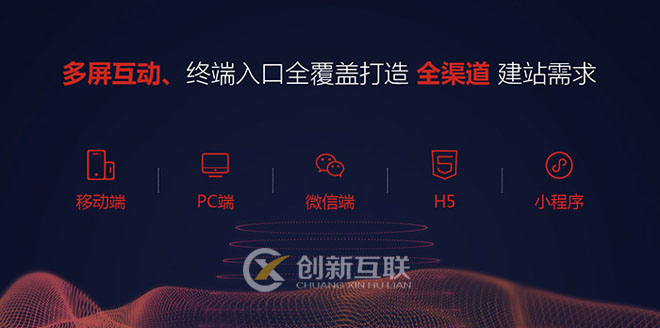通过Pig实现关键词匹配
Apache Pig是一个分析大型数据集的平台,它由表达数据分析程序的高级语言和评估这些程序的基础设施组成。Pig程序的突出特性是其结构可以进行大量的并行化,进而使其能够处理非常大的数据集。

创新互联建站成都网站建设按需策划,是成都网站设计公司,为成都展览展示提供网站建设服务,有成熟的网站定制合作流程,提供网站定制设计服务:原型图制作、网站创意设计、前端HTML5制作、后台程序开发等。成都网站制作热线:18982081108
1. 问题描述
收集日志avro数据中有两个Map字段appInstall、appUse分别表示已安装的app、正在使用的app,且key值为app的名称,value值为app使用信息。现在要得到一份匹配上购物类app支付宝|京东|淘宝|天猫的用户名单;MapReduce 解决办法如下:
public static class M extends Mapper {
Text text = new Text();
@SuppressWarnings("unchecked")
@Override
protected void map(String key, Pair value, Context context) throws IOException, InterruptedException {
Map data = value.fields.data;
String dvc = data.get("dvc").toString();
Map appInstall = (Map) data.get("appInstall");
Map appUse = (Map) data.get("appUse");
for(String app: appInstall.keySet()) {
if(app.matches("支付宝|京东|淘宝|天猫")) {
text.set(appInstall.keySet().toString());
context.write(dvc, text);
return;
}
}
for(String app: appUse.keySet()) {
if(app.matches("支付宝|京东|淘宝|天猫")) {
text.set(appUse.keySet().toString());
context.write(dvc, text);
return;
}
}
}
}
但是,如果要匹配游戏类的app、金融类的app类呢?如果匹配关键词发生了变化呢?显然,我们应该将匹配关键词开放成API,可以自由地匹配正则表达式。这时,pig派上了用场。
2. Bag正则匹配
A = load '//' using org.apache.pig.piggybank.storage.avro.AvroStorage();
-- A: {key: chararray,value: (fields: (data: map[]))}
B = foreach A generate value.fields.data#'dvc' as dvc, value.fields.data#'appInstall' as ins:map[], value.fields.data#'appUse' as use:map[];
-- B: {dvc: bytearray,ins: map[],use: map[]}
C = foreach B generate dvc, KEYSET(ins) as insk, KEYSET(use) as usek;
-- C: {dvc: bytearray,insk: {(chararray)},usek: {(chararray)}}
在上述代码中,load 数据转换得到bag类型的app-set(insk与usek);但是,应如何遍历bag中的tuple与正则表达式做匹配呢?答案是UDF。
Apache DataFu Pig 提供了丰富的UDF,其中关于bags的UDF可以参看这里。TupleFromBag 提供根据index从bag提取tuple,支持三个输入参数。依葫芦画瓢,遍历bag匹配正则表达式的UDF如下:
package com.pig.udf.bag;
/**
* This UDF will return true if one tuple from a bag matches regex.
*
* There are two input parameter:
* 1. DataBag
* 2. Regex String
*/
public class BagMatchRegex extends FilterFunc {
@Override
public Boolean exec(Tuple tinput) throws IOException {
try{
DataBag samples = (DataBag) tinput.get(0);
String regex = (String) tinput.get(1);
for (Tuple tuple : samples) {
if(((String) tuple.get(0)).matches(regex)){
return true;
}
}
}
catch (Exception e) {
return false;
}
return false;
}
}
其中,FilterFunc为过滤UDF的基类,继承于EvalFunc,即exec(Tuple tinput)的返回值必为Boolean类型。bag正则匹配的pig脚本如下:
REGISTER ../piglib/udf-0.0.1-SNAPSHOT-jar-with-dependencies.jar
define BagMatchRegex com.pig.udf.bag.BagMatchRegex();
A = load '/user/../current/*.avro' using org.apache.pig.piggybank.storage.avro.AvroStorage();
B = foreach A generate value.fields.data#'dvc' as dvc, value.fields.data#'appInstall' as ins:map[], value.fields.data#'appUse' as use:map[];
C = foreach B generate dvc, KEYSET(ins) as insk, KEYSET(use) as usek;
D = filter C by BagMatchRegex(insk, '支付宝|京东|淘宝|天猫') or BagMatchRegex(usek, '支付宝|京东|淘宝|天猫');
3. 优化
还有没有可以做优化的地方呢?我们先来看看pig中的KEYSET实现:
package org.apache.pig.builtin;
public class KEYSET extends EvalFunc {
private static final TupleFactory TUPLE_FACTORY = TupleFactory.getInstance();
@SuppressWarnings("unchecked")
@Override
public DataBag exec(Tuple input) throws IOException {
if(input == null || input.size() == 0) {
return null;
}
Map m = null;
// Input must be of type Map. This is verified at compile time
m = (Map)(input.get(0));
if(m == null) {
return null;
}
DataBag bag = new NonSpillableDataBag(m.size());
for (String s : m.keySet()) {
Tuple t = TUPLE_FACTORY.newTuple(s);
bag.add(t);
}
return bag;
}
...
}
需要指出的一点——pig的map数据类型是由Java类Map实现的。从KEYSET源码中可以看出在调用时已经将map遍历了一次,然后在调用BagMatchRegex时又需要将key-set的bag再遍历一次。其实,完全可以只用一次遍历做map-key值的正则匹配:
package com.pig.udf.map;
/**
* This UDF will return true if map's key matches regex. * * There are two input parameter: * 1. Map * 2. Regex String */ public class KeyMatchRegex extends FilterFunc { @SuppressWarnings("unchecked") @Override public Boolean exec(Tuple input) throws IOException { try{ Map m = null; // Input must be of type Map. This is verified at compile time m = (Map)(input.get(0)); String regex = (String) input.get(1); for (String key : m.keySet()) { if(key.matches(regex)){ return true; } } } catch (Exception e) { return false; } return false; } }
网页题目:通过Pig实现关键词匹配
文章路径:http://www.hantingmc.com/qtweb/news15/221915.html
网站建设、网络推广公司-创新互联,是专注品牌与效果的网站制作,网络营销seo公司;服务项目有等
声明:本网站发布的内容(图片、视频和文字)以用户投稿、用户转载内容为主,如果涉及侵权请尽快告知,我们将会在第一时间删除。文章观点不代表本网站立场,如需处理请联系客服。电话:028-86922220;邮箱:631063699@qq.com。内容未经允许不得转载,或转载时需注明来源: 创新互联
- 互联网频发重大信息泄露事件 建议用户定期修改密码
- 快速上手:使用Python连接SQLServer数据库并实时读取数据?
- 如何使用MysqlIDS抵御针对WEB的攻击
- 百度快照做一年多少钱,做一年牢有多少钱
- 百卓Smart免审计KEY实现企业分级管理
- localStorage和sessionStorage总结以及区别
- 韩国云主机租用价格与哪些方面有关联
- 创新互联鸿蒙OS教程:鸿蒙OSTransitionRotation
- 三网卡服务器网络配置指南
- LinuxCentos7升级内核具体方法
- redis客户端密码连接不上如何解决
- 想学习区块链?那就用Python构建一个
- Github上排名前五的开源网络监控工具
- Mark Suster:怎样做一个非常艰难的决定?
- 港专租小程序靠谱吗?(游戏服务器租用香港)